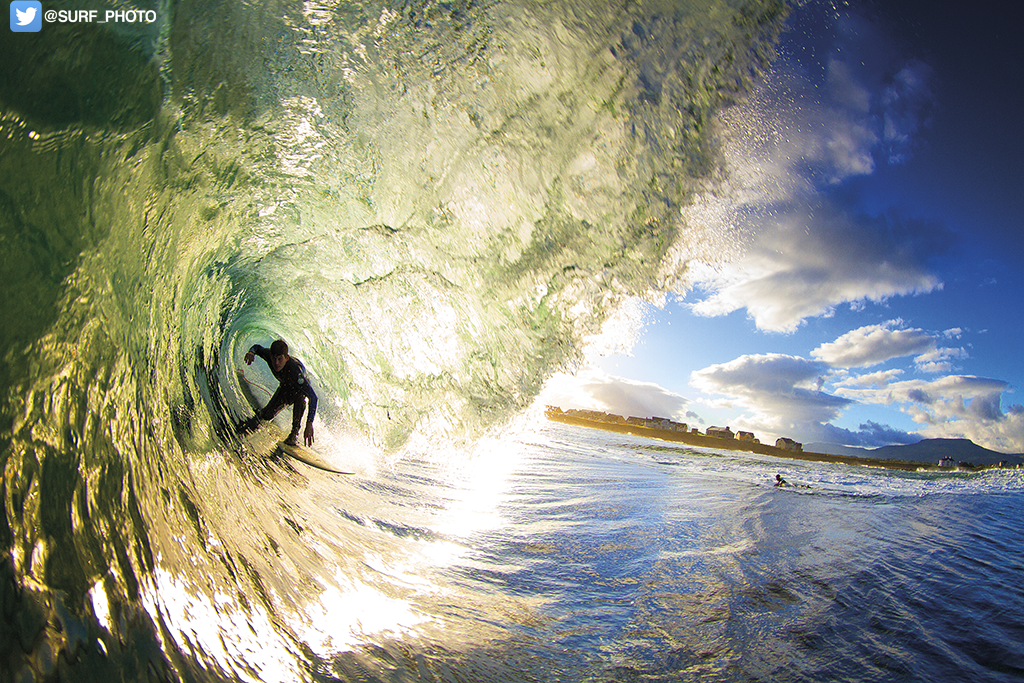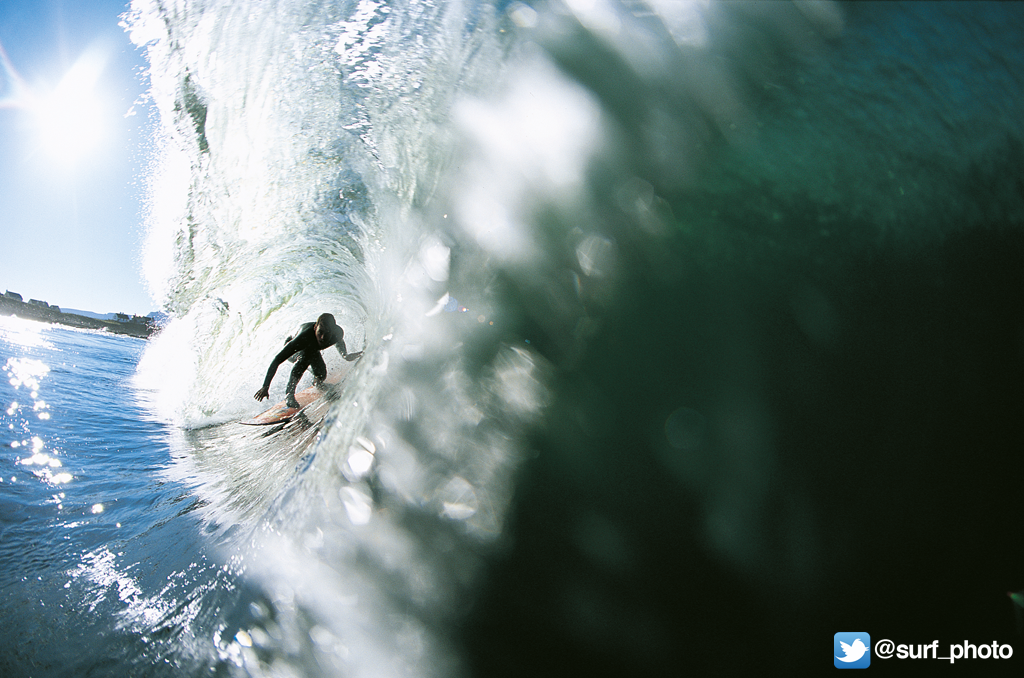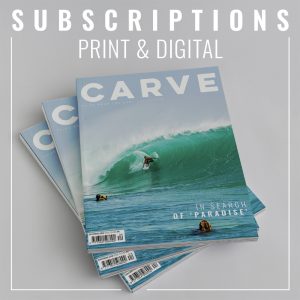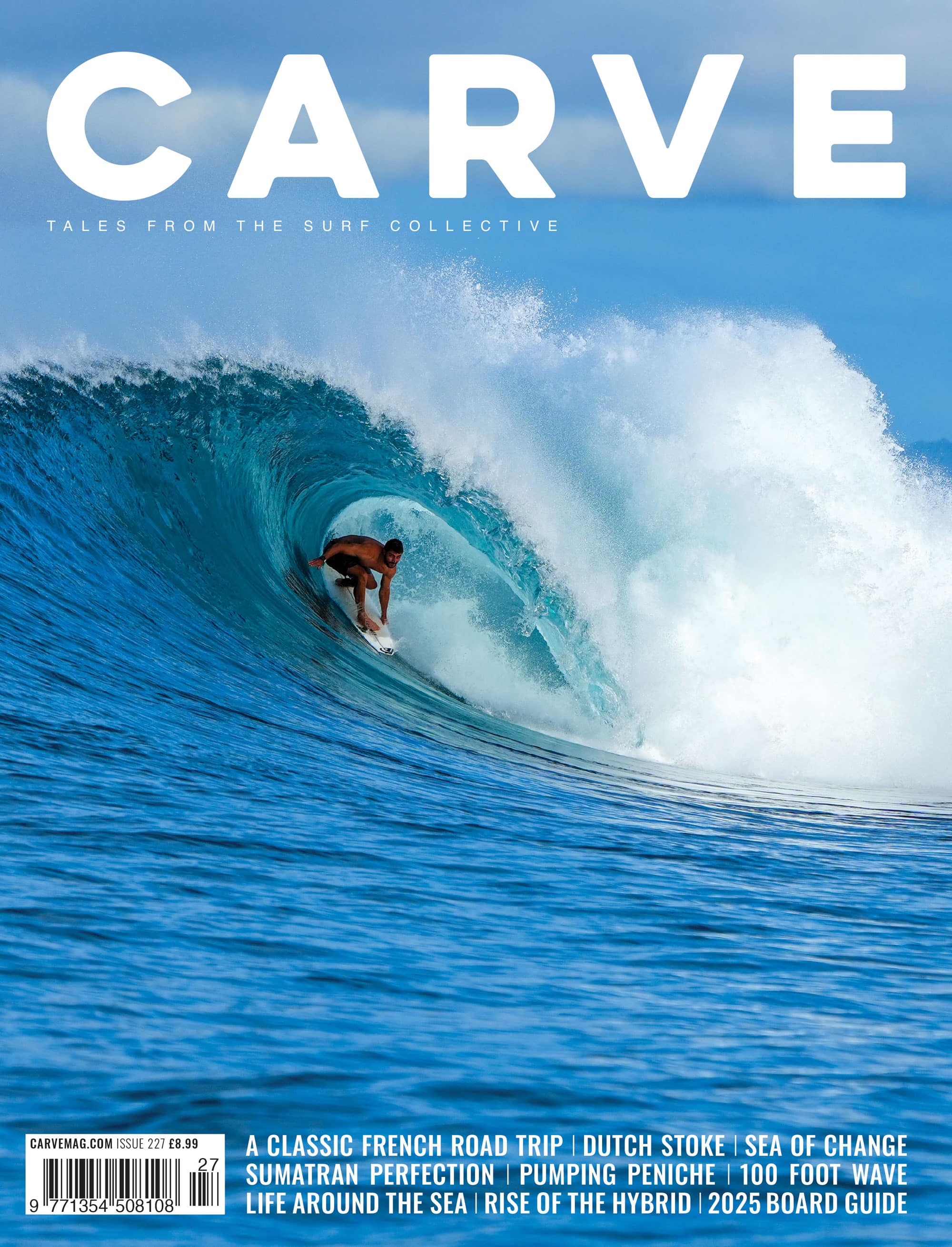20 Years of Surf Photography & Magazine Making
Technology moves fast. We know this. In the twenty years the magazine has been in existence the way it’s produced has changed immeasurably.
Back in 1994 producing a magazine was a lengthy and expensive process. Hard to imagine now in the digital age but you couldn’t just produce a magazine in your bedroom on a laptop like you can these days.
The photos were all shot on film, slide film to be precise. Now slide film is not forgiving. If the exposure was wrong then the photo was ruined. That was why at the time every photographer lived with a light meter dangling around their neck.
A roll of film has 36 shots on it, a real issue especially when shooting in the water. So once a roll was finished, which if shooting with a 10 frames a second Canon 1V film body (£1400 for the best film camera Canon made, compare to £5000 for the equivalent digital body these days) was approximately six hook ups, you’d have to swim back to shore, dry off the housing and then delicately change the film roll without dripping nose drain in the camera. As you can imagine changing a roll of film on a sandy beach when you’ve just got out the sea is quite a challenge. Especially when the surf is pumping and you’re missing the gold. So it wasn’t uncommon for photographers to swim with two water-housings. Which had the added bonus in the changeable British weather of being able to have one housing with standard colour slide film and one with fast black and white slide film. From land it was equally challenging, whilst autofocus lenses had been around since 1987 many photographers were still using manual focus cameras and lenses until the mid to late nineties. Replacing an expensive camera system wholesale was obviously a big ask.
So with the double whammy of tricky slide exposure and manual focus nailing good surf photos was a real art twenty years ago. Good shots were worth their weight in gold.
Once shot the rolls of film were sent off or taken to the lab. In Honolulu, or London for example, the labs could do a two hour turn around so if on a real deadline you could get them same day. But to get them to the magazine was still done physically. If you were a photographer in the nineties you had a Fedex or DHL account; as couriers were your lifeline.
Sure the early Internet existed in a minimal way when the mag started, the first web browser was in 1993 (Google didn’t exist until 1998, carvemag.com launched in 2000) but photos were yet to be digitally revolutionised in shooting or transmission. The early digital camera projects Kodak did with Nikon and Canon were never commercial. The 1.3 megapixel Kodak/Canon in 1994 was £12,000 and of no use for magazines.
Once at the magazine the slides would go on a big light table and the pick for the issue was done, with often heated debates around the light table then at a slideshow. With the office staff haranguing each other until a consensus on which shots were best. Once the photos were decided upon the slides were sent off to the repro house. An industry that has since virtually disappeared. It was a dark art scanning. The slides were removed from their mounts, coated in oil and put into a ridiculously expensive drum scanner manned by a team of expert geeks. Every scan cost money. A drum scan was £25. So just to get the digital photo files ready for design in Quark Express cost a few thousand pounds.
The computers at the time couldn’t even cope with high resolution drum scan images so design was done with low-res then the repro house would package up the finished files for the printers.
It was expensive, time consuming and really difficult to make last minute changes. But back then surf magazines were the cultural glue in surfing. The magazines were the only source of what was happening in the surf world. Ad budgets and operating budgets were way bigger.
Twenty years later it is a whole new world.
The digital photography revolution at the start of the century killed off film and cut the repro house out the loop. You could now get print ready magazine image files without spending thousands on repro. Anyone can go out and shoot surf photos with a camera costing a few hundred pounds and get stunning results.
Making the magazine is a breeze as the computers are so powerful. No more asking the computer to do something then going and having a cup of tea while the processing ‘status bar’ wound its way down.
People like to whine about progress but the technology we use to shoot, write and produce the magazine has made a quantum leap in twenty years. It makes our lives easier and the camera technology means our photographers can bring you better images. It’s all good. The digital revolution has democratised the surf media. Anyone can shoot, write and publish to the world.
It’s hard to imagine 1994, the year Carve started, if you weren’t there. Twitter and Facebook were 12 years away. Nobody ‘went on the Internet’ for fun. Email was the only thing that people used the net for. The camera phone was still science fiction. Internet able phones didn’t arrive until 1999. The humble iPhone, brought to the world 2007, a device you can even read the magazine on in 2014, is a device so powerful it blows the Apple beige box computers used to design the magazine in 1994 out the water. They didn’t even have 1GB of memory. It has an 8MP camera, the same resolution as the top of the line Canon 1DMk2 camera body from 2004… And it shoots photos good enough for the magazine.
The times they are a changing. The surf thankfully doesn’t. The top pic is a recent digital image. The one below from the early 2000s shot on film…







